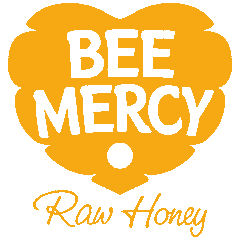Bee Anatomy - It's all about the inside!
Oct 24, 2014
The honey bee is a wonderful creation that nourishes us with honey and in the process helps flowers to reproduce. It is designed in a way that is both functional and exquisite. To better understand how the bee produces honey let us take a look at its anatomy.
Head: The head is dominated by large eyes, sensitive antennae, and a complex arrangement of mouthparts.
Eye: Each of the bee's eyes contains over 6500 separate facets, allowing it to see in front, to the side, above, and below itself. Bees can also perceive all the colors visible to humans except for red, which appears black to them. Honey bees, like many other insects, can see UV light as a separate color, which we cannot. Bees also have three simple eyes, called ocelli which are grouped near the top of the head. These are sensitive to light and are likely used to orient to light as they cannot focus on an image.
Pharynx: this is the first section of the alimentary canal. Strong muscles here provide suction to draw in nectar from flowers. This is also the site for taste reception in insects.
Brain: The brain is dominated by the optic lobes, which process the visual input from the large compound eyes. Honey bees also have excellent memory processing and learning abilities, necessary for long foraging flights away from their hives. The brain coordinates and regulates the functions of all bodily systems.
Thorax: This is primarily used in movement, as the attachment site for six legs and four wings. The ventral nerve cord, heart, and esophagus pass through, but most of the space inside the thorax is taken up by sets of powerful flight muscles.
Heart: A bee’s heart, like all other insects, is simply a series of maculated chambers connecting the aorta, a large artery that runs forward to the head. When relaxed, blood from the abdominal cavity enters the heart chambers. When it contracts, the blood is forced forward through the aorta to the brain, and then circulates back through the thorax, bathing all the organs and muscle tissues along the way. This type of open circulatory system is well suited for a small insect.
Antennae: The antennae are important sensory organs for the bee, which must remain clean to function effectively. Each of the bee's front legs is equipped with an antenna cleaner. This specialized notch is lined with numerous fine, stiff setae. As the shaft of the antenna is drawn through, debris is removed. The tibia spur on the front legs helps to hold the antenna against the notch.
Pollen press: This is located just below the pollen basket on the hind legs. As pollen is combed from the rest of its body, the bee uses this leg joint to compress the grains into a dense mass, which can be more efficiently stored in the pollen basket (or corbicula).
Esophagus: This is little more than a thin tube connecting the pharynx and crop. Their diet of honey and pollen does not require a powerful musculature esophagus as in vertebrates.
Honey crop/honey stomach: This is where the worker bee stores collected nectar for the trip back to the hive without digesting it. A muscular valve called the proventriculus can be closed, keeping the nectar from passing into the stomach. The crop is expandable, allowing the bee to carry a larger load. Back in the hive, the contents of the crop can be ejected back through the mouth for storage in a honey cell or to feed other bees by trophallaxis.
True stomach (or ventricles): This is the site of primary digestion for pollen and nectar. Coiled around in the abdomen, it is actually about twice the length of the bee's body.
Hindgut: This is composed of the intestine and rectum, where reusable metabolic products are reclaimed and excess water is reabsorbed into the body. The rectum can expand and hold a large volume of waste matter. Bees keep meticulously clean nests and will hold their wastes until they can make a "cleansing flight" outside of the hive. In climates with long, cold winters, bees can wait for weeks or months to perform this task.


